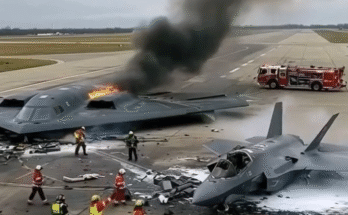Camera Captures: Moments That Changed Everything
In a world saturated with smartphones, surveillance footage, and social media livestreams, cameras have become the omnipresent eyes of our society. They record moments we often miss, preserve memories we might otherwise forget, and sometimes capture events that shake communities to their core. From candid snapshots to high‑definition security footage, cameras serve as both witnesses and storytellers of modern life.
The Power of the Lens
A photograph or video can capture far more than a mere image. It freezes motion, preserves emotion, and sometimes tells an entire story in a single frame. The power of the lens lies in its ability to show truth—even when no one else is watching.
Consider the thousands of traffic cameras embedded in city streets. Many of these devices operate silently, unnoticed by drivers rushing to work. But when an accident occurs, these cameras provide critical evidence. They can reconstruct the sequence of events leading to a collision, identify negligent behavior, or confirm acts of heroism. In legal and investigative contexts, footage from these devices is often more reliable than eyewitness accounts, which can be distorted by fear or stress.
Similarly, smartphones have transformed ordinary people into documentarians. Every moment—from a breathtaking sunset to an unexpected act of kindness—can be captured and shared instantly. A single video uploaded online can go viral within hours, sparking conversations, inspiring movements, or even influencing policy decisions.
Moments of Heroism
In recent years, cameras have captured countless acts of courage. One video that went viral depicted a bystander rescuing a child from a rushing river. Security footage from a nearby store had caught the child wandering close to the edge of the water. The video shows the bystander acting swiftly, pulling the child to safety while onlookers watched in disbelief. That single clip reminded millions of viewers of the extraordinary lengths ordinary people will go to help others.
Similarly, in cities plagued by crime, surveillance cameras have sometimes captured police officers performing acts of bravery, saving lives under extreme conditions. These videos provide accountability, transparency, and occasionally, vindication for individuals whose actions might otherwise be misunderstood or misrepresented.
Moments of Tragedy
Not all footage captures uplifting events. Cameras also bear witness to tragedy, often unflinchingly. From traffic collisions to natural disasters, from industrial accidents to violent crimes, the lens captures the stark reality of human vulnerability.
In one incident, a security camera outside a school recorded the first moments of an accident that tragically claimed lives. The video, later reviewed by investigators, was instrumental in understanding exactly what had happened—allowing authorities to make recommendations to prevent future incidents. While painful to watch, such footage serves an essential role in accountability and learning.
In another instance, a dashboard camera on a delivery truck captured a sudden storm that swept across a highway. The footage showed vehicles skidding, emergency braking, and collisions that unfolded in seconds. Investigators used the footage to analyze road conditions, response times, and safety measures. Though it depicted disaster, the video ultimately contributed to measures that could save lives in the future.
Capturing Everyday Miracles
Not every impactful capture involves danger or crisis. Cameras also preserve ordinary yet miraculous moments. A parent’s smartphone may capture a child’s first steps, the laughter of a grandparent, or a fleeting expression of joy that might otherwise have gone unnoticed. These recordings remind us that life is a series of moments, and without documentation, they can fade into memory.
Time‑lapse videos, in particular, have transformed the way we experience the world. Footage of flowers blooming, cities waking up, or storms forming offers perspectives that are impossible to see in real time. These visual records make invisible processes visible, allowing us to appreciate the extraordinary in the ordinary.
The Ethical Considerations
With the proliferation of cameras comes responsibility. Not every captured moment should be shared indiscriminately. Privacy, consent, and context matter. Viral videos of misfortune or conflict can unintentionally exploit victims or escalate situations. Moreover, the constant presence of cameras can alter human behavior, sometimes suppressing spontaneity or encouraging performative acts for the sake of being recorded.
Journalists, investigators, and social media users alike must navigate these ethical dilemmas. The power of the camera to inform, persuade, or influence is immense—and must be wielded thoughtfully.
Technology Transforming Captures
Advancements in technology have amplified what cameras can capture. High‑definition, 360‑degree cameras allow viewers to explore scenes in unprecedented detail. Drones can follow events from perspectives previously inaccessible, whether surveying wildfire damage, monitoring traffic flow, or documenting protests. Artificial intelligence now assists in analyzing footage, detecting anomalies, and even reconstructing incidents from partial or blurred recordings.
One recent breakthrough involved using AI to stabilize shaky surveillance footage of a crime scene. By clarifying movements and faces, investigators were able to identify suspects and provide crucial evidence in court. Technology, combined with human interpretation, has made cameras indispensable tools in both everyday life and critical situations.
Cultural Impact
The cultural impact of captured moments is profound. Viral videos, photographs, and documentaries shape public opinion, inspire social movements, and even alter political landscapes. Consider footage of protests, environmental disasters, or humanitarian crises. These recordings often galvanize support, mobilize resources, and draw attention to issues that might otherwise remain invisible.
Art and media also benefit from the visual records that cameras provide. Documentaries, photojournalism, and short films rely on captured moments to tell stories that educate, provoke thought, and preserve history. In many ways, cameras act as custodians of collective memory, ensuring that the stories of individuals and communities endure.
Conclusion: Cameras as Witnesses of Humanity
From the mundane to the extraordinary, cameras capture the breadth of human experience. They record tragedy and triumph, horror and beauty, fear and joy. In doing so, they serve as witnesses to our lives—sometimes in ways we never intended or imagined.
Whether installed on street corners, carried in pockets, or flown on drones, cameras have become integral to understanding the world around us. They allow us to reflect, learn, and sometimes act. In moments of crisis, they provide clarity and accountability; in moments of beauty, they preserve joy.
Ultimately, every captured moment, whether fleeting or monumental, tells a story. The lens does not judge—it simply observes. And in its silent observation, it reminds us of the complexity, fragility, and extraordinary nature of life itself.


